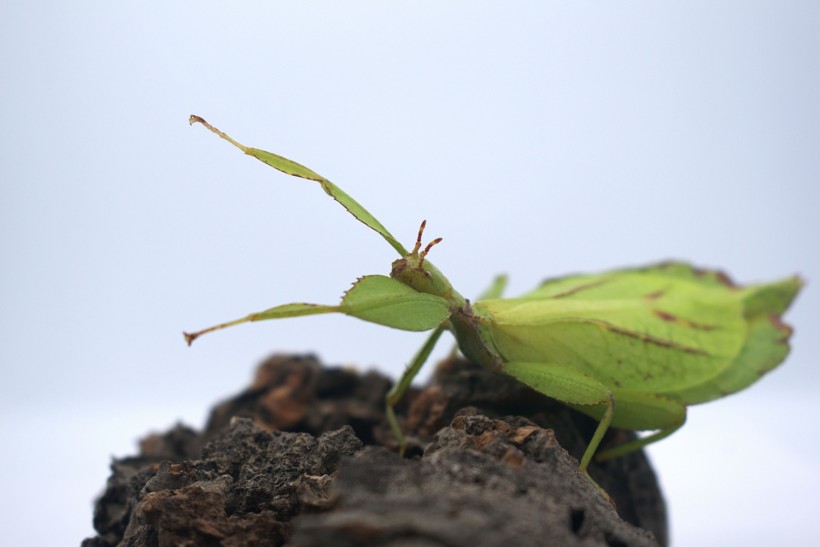Researchers from multiple institutions in Brazil have conducted a study of the effectiveness of the different types of camouflage in animals, Newsweek reported. Camouflage strategies differ in each animal, from color-changing chameleons to caterpillars or insects looking like twigs or leaves.
Researchers describe which strategy is the most effective in their paper, titled "Predator Responses to Prey Camouflage Strategies: A Meta-Analysis" published in Proceedings of the Royal Society B: Biological Sciences.

Leaf insect (phyllium philippinicum)
Not all camouflage are equal
Camouflage is a defense tactic of animals to disguise their appearance, usually blending in their environment to mask their location, identity, and movement. In this way, they can avoid predators and for predators to sneak up on prey.
But not all camouflage is created equally. According to National Geographic, a species' camouflage depends on several factors. These factors include their physical appearance, behavior, and the behavior and characteristics of their predators. Some of these camouflage tactics include the following:
- Background matching- It is the most common camouflage tactic, wherein the animal conceals itself by mimicking its surroundings in coloration, form, or movement.
- Copying inanimate objects- Animals with this camouflage technique pose as inanimate objects, such as leaves or twigs. The walking stick and walking leaf insects both look like their namesakes and are sometimes hard to identify.
- Disruptive coloration- Instead of blending, some species disguise themselves through a coloration pattern that disrupts predators into misidentifying them.
- Warning coloration or aposematism- This type makes predators aware of the toxic or dangerous characteristics of an animal.
- Countershading- It is a form of camouflage in which the top of an animal is darker, while its underside is lighter. Sharks use this technique, so they could blend in with the darker ocean when seen from above.
Which is the best camouflage technique?
The new study from the Brazilian scientists is said to be the first research to create a comparison of the types of camouflage. João Vitor de Alcantara Viana at the State University of Campinas in Brazil to New Scientist that it is an opportunity to understand how camouflage evolved and how different types of camouflage interact.
The team compiled data from 84 publications on a variety of predators and prey to identify which camouflage strategy is the most effective. They simulated the animals to see how long they can be found by their predators. They found that any animal with camouflage increased predator search time by about 63% and decreased the chances of being attacked by 27%.
In another scenario, animals that employed a masquerade camouflage or who resembled an inanimate object, like a rock, plant, or poop were the most successful in delaying the attack and increased search time to 295%. Meanwhile, other camouflage methods, like blending to the background only had an increased search time of 55%.
For motion camouflage, the team found it did not increase predator search although it decreased the chances of being attacked. Other types of camouflage also include mimicry, wherein species take advantage of the aversion of their predator to bright colors.
RELATED ARTICLE: Coastal Animals Lose Advantage To Camouflage Due To Artificial Light at Night, Study Claims
Check out more news and information on Animal Camouflage in Science Times.


![Extinct Giant Salmon Had Tusk-Like Spikes Protruding Out of Its Snout That Can Easily Kill Shark, Other Large Marine Animals [Study]](https://1721181113.rsc.cdn77.org/data/thumbs/full/53304/89/56/50/40/extinct-giant-salmon-had-tusk-like-spikes-protruding-out-of-its-snout-that-can-easily-kill-shark-other-large-marine-animals-study.png)











